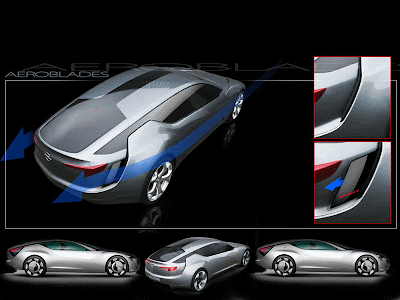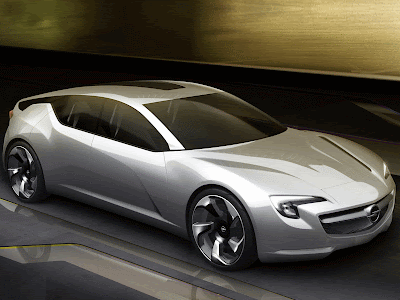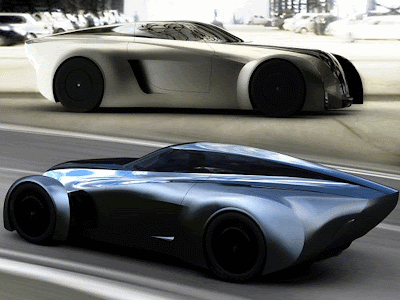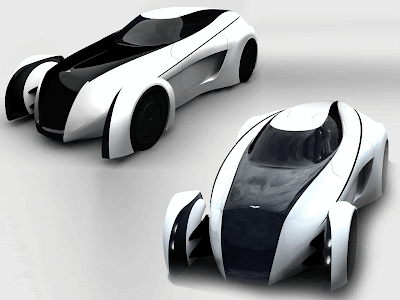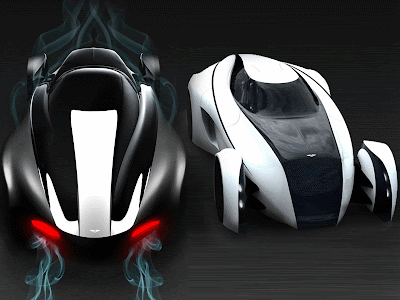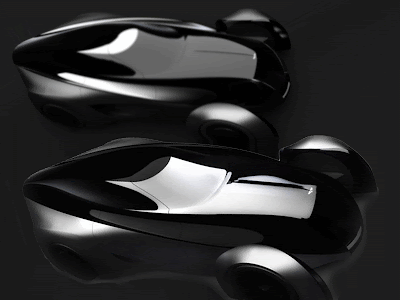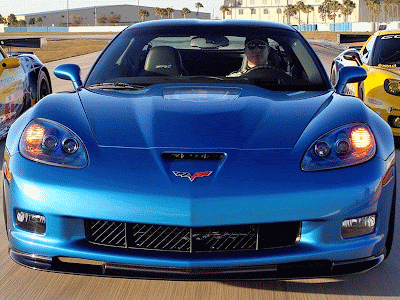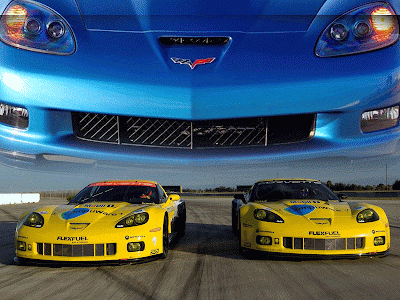Post Title → 2010 Opel Flextreme GT/E Concept with E-REV Drive System
Home » Archives for February 2010
Saturday, February 27, 2010
2010 Opel Flextreme GT/E Concept with E-REV Drive System
Post Title → 2010 Opel Flextreme GT/E Concept with E-REV Drive System
Nissan Skyline
Post Title → Nissan Skyline
2010 Audi A1
Post Title → 2010 Audi A1
Lancer Evo X
Post Title → Lancer Evo X
Fiat 500 Abarth
Post Title → Fiat 500 Abarth
Friday, February 26, 2010
Bentley AERO ACE Sports Car Concept Next-Gen Speed VI
Post Title → Bentley AERO ACE Sports Car Concept Next-Gen Speed VI
Cadillac XTS Platinum Concept (2010)
-5.jpg)
-4.jpg)
-3.jpg)
-2.jpg)
-1.jpg)
Cadillac unveiled the Cadillac XTS Platinum Concept at the 2010 North American International Auto Show, suggesting a new paradigm for the luxury sedan of the future. The concept showcases Cadillac's emerging top-of-the-line Platinum series of models, emphasizing new expressions of luxury and technological features, including a plug-in hybrid propulsion system.
The Cadillac XTS Platinum Concept was designed from the inside out, re-imagining the luxury sedan as a personal headquarters, built for efficiency, luxury and connectivity. The concept introduces a new approach to in-car electronics that improves the form and function of the car's entertainment, navigation and information systems.
"The Cadillac XTS Platinum concept is the next expression of Cadillac's Art and Science execution philosophy, reflecting our drive to deliver the latest innovations in the most artful manner," said Bryan Nesbitt, Cadillac general manager. "We envisioned this concept as an automotive personal headquarters, using advanced technology to enable new levels of connectivity and luxury."
The Cadillac XTS Platinum Concept uses Cadillac's 3.6L V-6 Direct Injection gas engine, paired with a plug-in hybrid system. The plug-in technology enables the battery to fully charge from a standard electrical outlet, enabling pure electric propulsion in many driving situations, especially urban commutes in which fuel efficiency may double that of a conventional hybrid.
Traditional luxury sedans were defined by elegant interiors and Cadillac XTS Platinum Concept propels that formula into the future. It delivers new approaches to luxury within a design that combines fine craftsmanship with customer-driven innovation. Like the current Platinum Edition products, such as Escalade Platinum and the STS and DTS Platinum sedans, the interior is based on hand cut-and-sewn materials. The Cadillac XTS Platinum Concept injects more contemporary forms and themes into the interior design, including the use of Organic Light-Emitting Diode (O-LED) displays in place of traditional gauges and screens.
The concept previews a new integration philosophy guiding the development of future models with respect to in-car electronics. The intent is to progress Cadillac's intuitive in-car electronics systems, typified by the deployable touch-screen navigation system that has been highly acclaimed in the brand's CTS and SRX product lines. The Cadillac XTS Platinum Concept previews this strategy via the minimization of traditional buttons and switches. Designers blended the display screens into a flowing instrument panel. They call it a "dead front" design, because the panels appear black until the car is turned on and the screens illuminate. The instrument panel itself reflects the Cadillac XTS Platinum's other focus - uncompromising luxury and attention to detail on the interior.
"The Platinum distinction in Cadillac means the fullest extent of luxury and technology and we've tried to reach even further with this concept," said Clay Dean, Cadillac design director. "Just as the technology pushes the boundaries of what a Cadillac can offer, so do the details that make the Cadillac XTS Platinum Concept an uncompromising experience."
The interior takes inspiration from nature, specifically the intricate layers of petals that combine to form an orchid. Cadillac designers translated that into a layered and detailed interior. Light cream is the cabin's primary color and is contrasted with darker elements, such as the steering wheel and an overhead console motif that runs the length of interior's roof. The console is made of a richly finished wood and houses lighting features.
Premium leather seats include a new style of automotive suede, with a laser-etched pattern. The patterned material adorns the center sections of the seats and accents the door trim. Thoughtfully detailed stitching is used throughout the interior, including the seats, instrument panel and door panels. Passengers in the spacious rear compartment of the Cadillac XTS Platinum Concept also have access to the car's connectivity feature, along with a range of infotainment choices.
"We never lost sight of the fact that a large luxury sedan needs to be spacious and accommodating," said Dean. "Passengers will find generous headroom, legroom and knee space, along with the technology elements that make the drive more productive."
A new proportion
The Cadillac XTS Platinum Concept has a distinctive proportion that transcends the traditional aesthetic of luxury sedans and carries the brand's Art and Science design in a more progressive manner. The unique proportion supports the "inside out" design priority, while creating a sleek profile that complements the car's advanced technology elements and necessary aerodynamics.
"The Cadillac XTS Platinum Concept design artfully conveys its focus on functionality through technology," said Dean. "It is the antithesis of the conventional three-box sedan, suggesting the active evolution of Cadillac's design language."
A sweeping profile culminates in a short, high deck lid that meets the Cadillac XTS Platinum Concept's aerodynamic needs - including a rear spoiler mounted on the deck lid, incorporating the center high-mounted stop lamp. A high, sloping beltline gestures the vehicle forward, suggesting motion, while the fenders flare outward wrapping tightly around 20-inch wheels and tires. The wheel-to-body proportion was carefully tailored to visually communicate the car's all-wheel-drive chassis.
Like the interior, the exterior elements are precisely tailored and elegantly detailed. Brushed billet aluminum trim is used selectively and the 20-inch, 11-spoke wheels feature a brushed aluminum face accented with bright inserts within the spokes. The wheels are wrapped with special Bridgestone tires that were created specifically for the Cadillac XTS Platinum Concept.
Signature elements essential to Cadillac's Art and Science design language include vertical headlamp and taillamps, with integrated light pipes and richly detailed lighting components. The headlamps feature light-emitting diode technology for bright illumination that requires less energy, as well as Cadillac's Adaptive Forward Lighting technology, which turns the headlamps with the direction of the front wheels for greater visibility in turns.
Purposeful and efficient performance
The Cadillac XTS Platinum concept's plug-in hybrid electric propulsion system (PHEV) builds on the experience Cadillac has gained with the Escalade Hybrid and Escalade Platinum Hybrid flagship models. The plug-in capability boosts the car's electric-only driving capability, offering additional battery energy capacity and enabling it to recharge from a standard external electrical outlet. The key benefit of external plug-in recharging is that in many situations - such as overnight parking - the battery can fully recharge in roughly five hours while the car is not in use. The plug-in system operates at maximum efficiency when operating on power the battery has drawn from the electric grid. In some conditions, such as urban commutes, drivers can experience efficiency that doubles that of conventional hybrids.
At higher speeds or when conditions demand it, such as brisk acceleration, a combination of engine power and electric power or engine power only, propels the vehicle. The combination of the Direct Injection V-6 engine and the PHEV system featuring fully electric variable drive provides a spirited driving experience. The system provides an estimated 350 horsepower (260 kW) and 295 lb.-ft. of torque (400 Nm).
Magnetic Ride Control (MRC) enables the Cadillac XTS Platinum Concept to deliver superior road-holding performance while maintaining luxury car composure in "regular" driving conditions. It uses shocks controlled by advanced magneto-rheological technology, rather than mechanical valves, to greatly accelerate response time and precision.
MRC uses electronic sensors at all four wheels to literally "read the road" every millisecond, making constant adjustments to damping to create virtually instantaneous and extremely precise control of body motions.
An advanced, specially calibrated all-wheel-drive system ensures optimal traction in wet and slippery conditions, and helps deliver maximum traction while cornering. Four-wheel disc brakes, with four-channel ABS, StabiliTrak stability control and full-function traction control complete the drivetrain details.
"The Cadillac XTS Platinum Concept was designed to deliver an engaging driving experience without compromising the functional features, space and comfort customers seek in a luxury car," said Nesbitt. "It is a new vision of luxury that uses advanced technology to deliver functionality efficiently and rewardingly."
CADILLAC XTS PLATINUM CONCEPT SPECIFICATIONS
Vehicle type: luxury sedan concept
Wheelbase: 111.7" / 2837 mm
Length: 203.5" / 5170 mm
Width: 74.8" / 1900 mm
Height: 59.1" / 1500 mm
Track:
front: 62.6" / 1589 mm
rear: 62.8" / 1594 mm
Powertrain: plug-in hybrid system with 3.6L Direct Injection gas engine (with variable valve timing); lithium ion battery
Suspension: four-wheel independent with Magnetic Ride Control.
Brakes: four-wheel disc with electric park brake system
Wheels: 20"
Estimated power: 350 hp (260 kW) / 295 lb.-ft. (400 Nm)
Post Title → Cadillac XTS Platinum Concept (2010)
Thursday, February 25, 2010
Chevrolet CORVETTE Racing at Sebring 2010
Post Title → Chevrolet CORVETTE Racing at Sebring 2010
The Luxury of Mini Van and SUV
The Bi-Xenon light has three functions: Active Light System, when the speed is between 40-70 km / hour, and when the car will turn then the headlights will follow the path so that the lighting will achieve the maximum lighting. Likewise when the car is up or down, the headlights will adjust automatically. There's also the Cornering Light which functions to provide the further warning to the vehicles or people around the car if the car wants to spin (not the sign or the turning light). The other safety systems are ABS, ESP, BAS, and alarms to prevent from the theft. For the R500 series, there is another feature that is keyless-Go, a feature that allows the driver to start the engine without removing the key from the bag.
Article Source: http://EzineArticles.com/?expert=Derry_Dharmawan
Post Title → The Luxury of Mini Van and SUV
